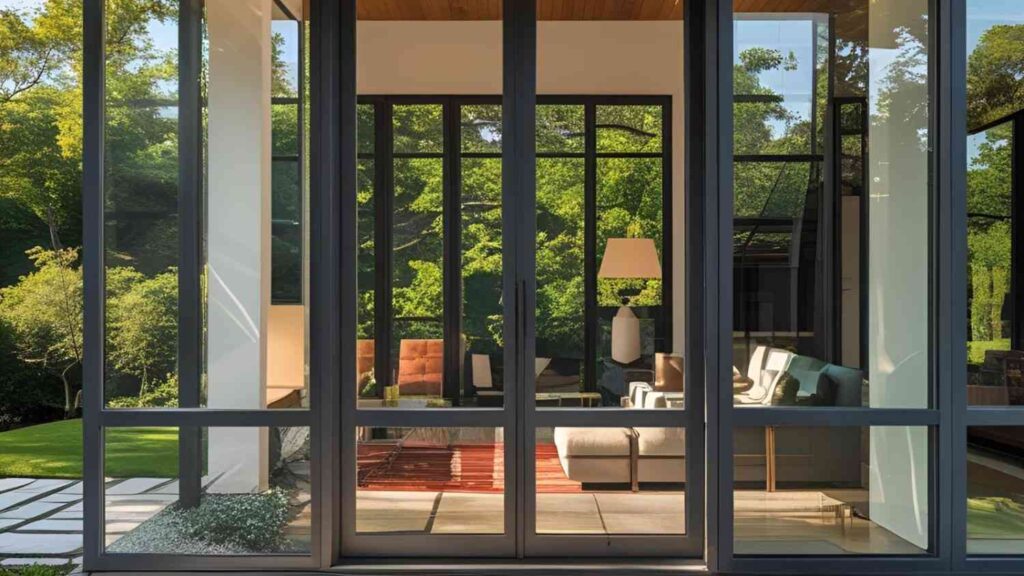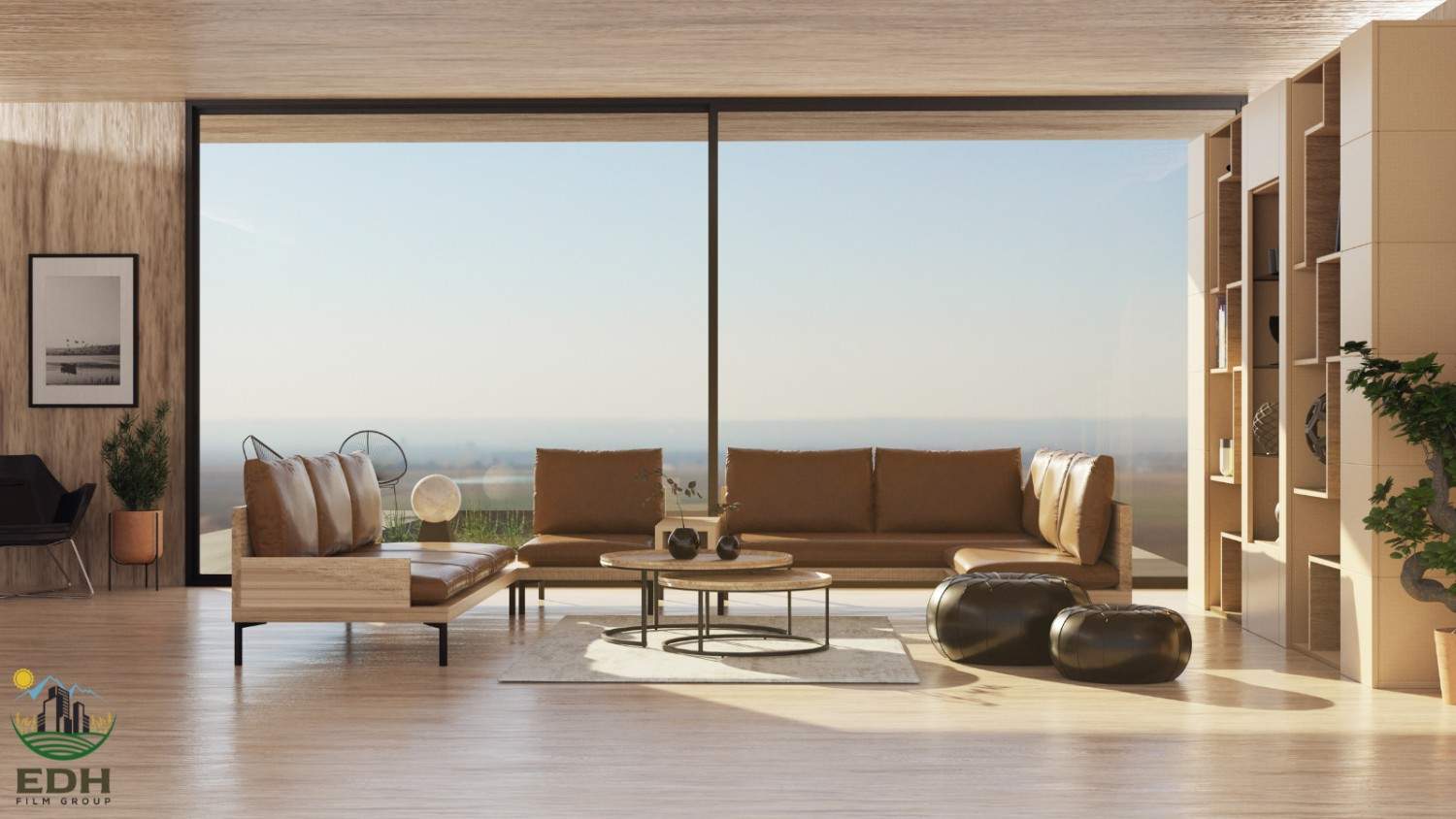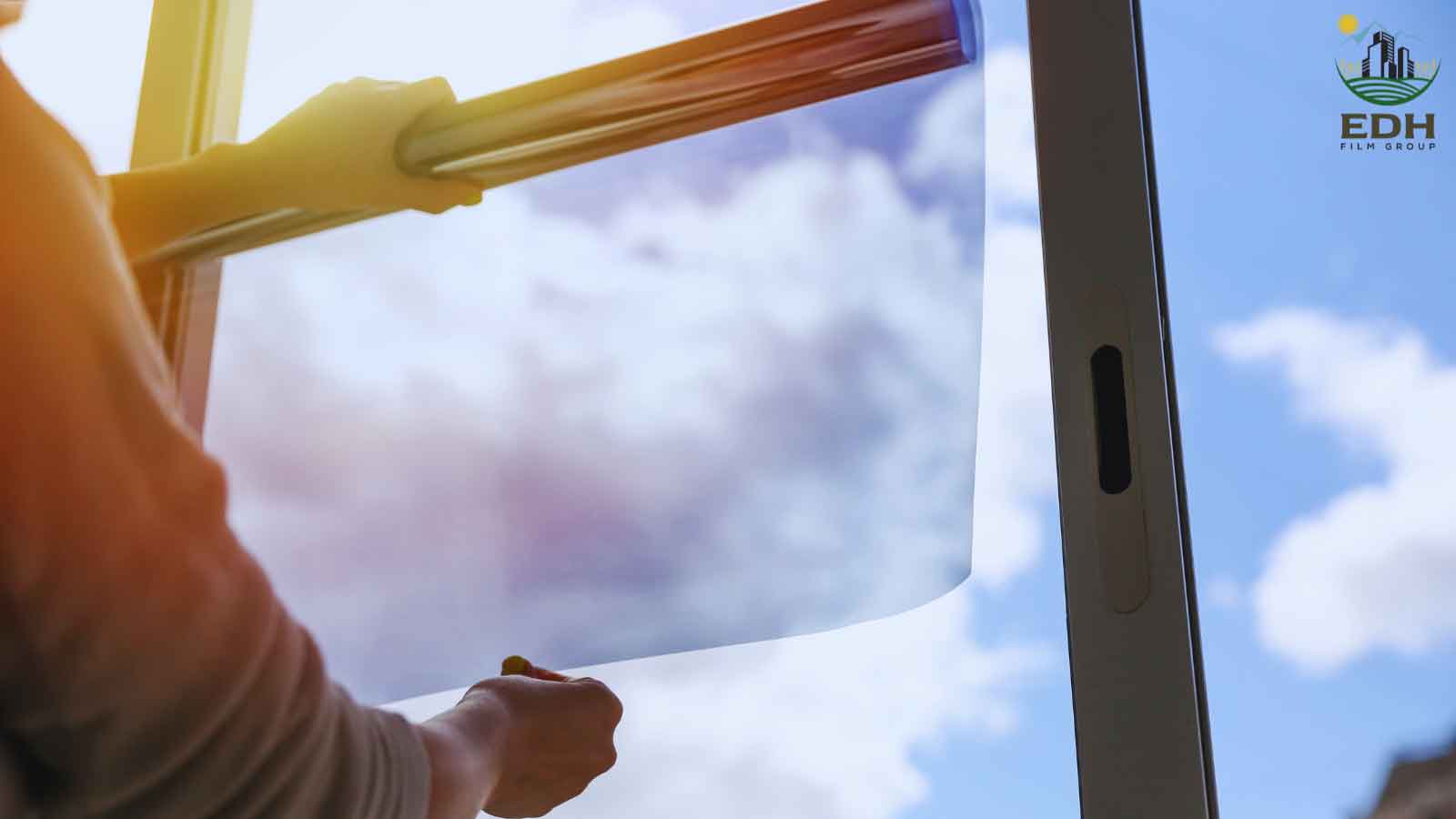You might have seen windows that look like mirrors on one side but are see-through on the other. That trick comes from one‑way window film. People use it to get privacy while still enjoying light. It also adds energy savings and blocks sun glare. In this guide, you’ll learn exactly how it works, where to use it, and how to set it up.
What Is One-Way Window Film?
One-way window film is a thin layer of polyester or metal-coated material applied to glass. Its main purpose is to provide privacy during the daytime, allowing you to see out while blocking others from seeing in.
It’s sometimes called:
- One-way mirror film
- Privacy film
- Reflective window film
The technology behind this film works based on light balance, specifically, the difference between light levels on each side of the glass.
The Science Behind One-Way Window Film
The secret to how one-way film works lies in light balance and reflectivity. The film contains metallic particles or layers that reflect light. Here’s how it functions step-by-step:
-
Light Reflection and Transmission
When sunlight hits a window with one-way film, a significant portion of the light is reflected by the film, especially on the brighter side of the glass. On the darker side (usually the interior), the film allows some light to pass through. Because human eyes are drawn to the brighter side and can’t easily see into the darker side, it creates the illusion of a mirror. -
Daylight Dependency
This effect only works when one side is significantly brighter than the other. During the day, when the outside is brighter, the film reflects light and appears mirror-like to people outside. At night, if the interior is brighter (like when lights are on), the mirror effect reverses, meaning outsiders may be able to see inside.
So the effectiveness of the film depends on the light contrast between the two sides of the window.
Key Benefits of One-Way Window Film
Let’s explore why this film has become so popular for residential and commercial use:
-
Privacy Without Curtains
One-way film gives you privacy during the day without needing blinds, curtains, or shades. You can enjoy natural light and outside views without feeling like you’re on display. -
Heat and UV Reduction
Many one-way films also offer solar control benefits. They reduce the amount of heat and UV rays that pass through your windows, making indoor spaces more comfortable and protecting furniture and floors from fading. -
Improved Appearance
Reflective films give buildings a sleek, modern look. They can create a consistent external appearance, especially in office towers and apartment buildings. -
Increased Energy Efficiency
By reducing solar heat gain, one-way film can help lower your air conditioning costs, especially during hot seasons. -
Glare Reduction
The reflective surface also helps to reduce harsh glare, making it easier to view screens and read comfortably indoors.
Limitations of One-Way Window Film
Despite its many advantages, one-way film isn’t a perfect solution for every situation. Here are some of the limitations you should be aware of:
-
Reversal at Night
As mentioned, when the inside is brighter than the outside, the mirror effect reverses. People outside may be able to see in clearly unless interior lights are dimmed or curtains are drawn. -
Limited Effect in Low-Light Conditions
In overcast weather or shaded areas, the reflective effect is less dramatic. If both sides of the window have similar lighting, the film’s privacy benefit is reduced. -
Aesthetic Considerations
From the outside, one-way film creates a mirrored surface, which may not match all architectural styles or personal preferences. -
Not Suitable for All Glass Types
Certain types of glass—especially double-pane or Low-E glass—may not be compatible with all films. Applying the wrong film could lead to thermal stress cracks or void your window warranty.
Types of One-Way Window Film
There are several varieties of one-way window film, each suited for different uses:
-
Reflective Film
The most common type. Highly effective during the daytime and has a silver, bronze, or mirrored finish on one side. Great for homes and offices. -
Dual Reflective Film
Reflective on the outside but with a slightly less reflective inside. Offers better nighttime visibility and reduces interior glare. -
Smart Window Film
An advanced solution that can change from clear to frosted with a switch or remote. Some versions offer controllable one-way visibility using electric current (though more expensive). -
Ceramic Film
Non-metallic but still offers heat and UV rejection. Less shiny and more subtle in appearance, it is often used where aesthetics are a priority.
How to Install One-Way Window Film
Installing one-way window film is a DIY-friendly task, but it requires precision and patience. Here’s a step-by-step guide:
Materials You’ll Need:
- One-way mirror film (pre-cut or roll)
- Spray bottle with water + a few drops of baby shampoo or dish soap
- Squeegee or credit card
- Utility knife
- Microfiber cloth or lint-free towel
- Tape measure
Step-by-Step Installation
Clean the Window Thoroughly
Remove all dust, grease, and fingerprints. Use the soap-water mix and a microfiber cloth.
Measure and Cut the Film
Cut the film to fit your window, leaving about 1 inch of extra material on all sides for trimming.
Apply the Soapy Water
Spray the window glass generously. This allows the film to be repositioned.
Peel Off the Backing
Carefully remove the protective liner from the film. Spray the adhesive side with more soapy water to prevent sticking.
Apply the Film to the Glass
Align the film starting from the top of the window. Use the squeegee to smooth out bubbles and push out water from the center toward the edges.
Trim Excess Film
Use a utility knife to trim the edges for a clean, professional look.
Final Squeegee Pass
Go over the film again to remove any remaining bubbles or moisture. Let it cure for 24–48 hours.
Tip: Avoid installing on rainy days or in extremely cold or hot temperatures, as this may affect adhesion.
Common Questions
Can people see in at night?
Yes, if your interior lights are on and it’s dark outside. To maintain privacy at night, you should still use curtains or blinds.
Will it darken my room?
Yes, slightly. Because it reduces the amount of light entering, the interior will be a bit dimmer. But most people find it comfortable, not gloomy.
Is it removable?
Yes. Most films are removable with a bit of heat (like from a hairdryer) and some adhesive remover.
Can I apply it to car windows?
Yes, but check local regulations. Some areas have strict laws about vehicle tinting, especially for front windows.
How long does it last?
High-quality films can last 5–15 years, depending on exposure to sunlight and weather.
Choosing the Right One-Way Window Film
When selecting a film, consider these factors:
-
Purpose: Are you prioritizing privacy, UV protection, heat reduction, or appearance?
-
Location: South-facing windows get more sun and may benefit from stronger reflective properties.
-
Aesthetic: Do you prefer a mirrored look or something more subtle?
-
Budget: Higher-quality films cost more but tend to last longer and offer better performance.
Look for brands with UV protection, scratch resistance, and warranty coverage.
Maintenance and Care Tips
To keep your window film in good shape:
- Clean with soft cloths and ammonia-free cleaners
- Avoid abrasive materials that could scratch the surface
- Inspect annually for peeling or bubbling, especially around edges
- Keep away from sharp objects near the window
When to Consider Professional Installation
If you’re dealing with:
- Large or oddly shaped windows
- Multi-pane glass (like French doors)
- High windows or skylights
- A commercial building
Then hiring a professional installer might be worth the investment. They’ll ensure a perfect fit and reduce the risk of bubbling, cracking, or film failure.
Final Thoughts
One-way window film is a powerful tool for increasing privacy, reducing glare, and improving energy efficiency—all without giving up natural light. Its unique light-balancing design makes it ideal for homes, offices, and vehicles. Just keep in mind its daytime limitations, and pair it with blinds or curtains at night for full 24/7 privacy.
Whether you’re a homeowner looking to upgrade your living space or a business owner wanting a more professional exterior, one-way window film offers a simple and affordable solution.
Work With the Experts at EDH Film Group
If you’re considering installing one-way window film but want expert advice or professional installation, look no further than EDH Film Group.
With years of hands-on experience and a reputation for precision and quality, EDH Film Group specializes in residential and commercial window film solutions. We offer a wide selection of high-performance films, including reflective, ceramic, and dual-reflective options—all tailored to your needs.
Contact us today to learn more or schedule your personalized quote. Let us help you bring comfort, privacy, and style to your space.





